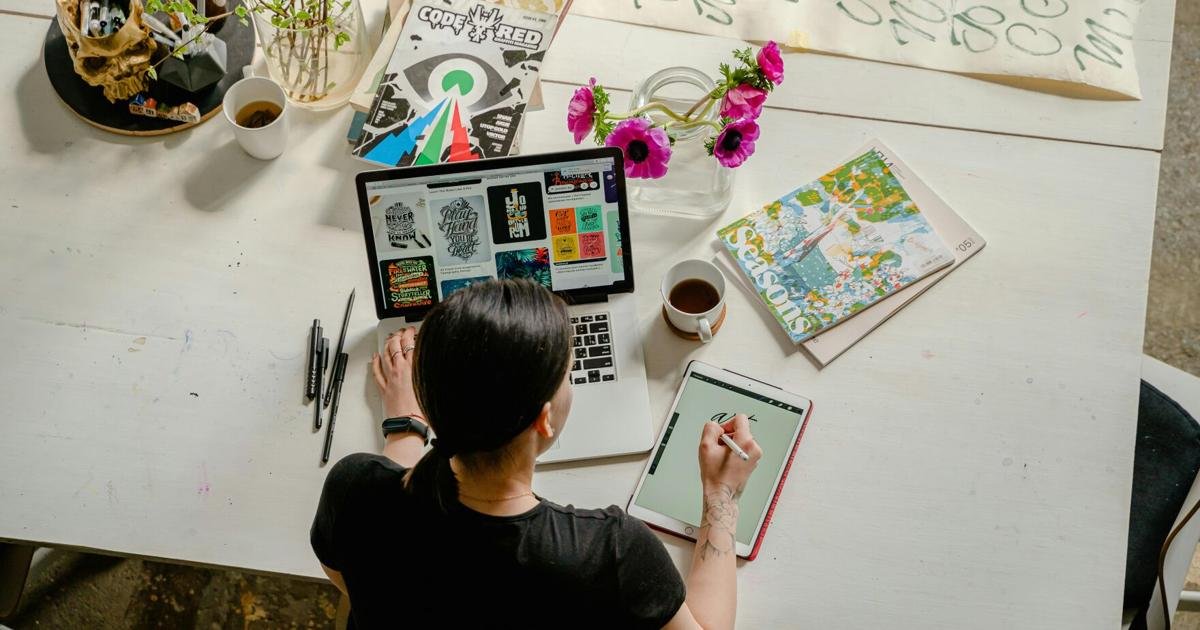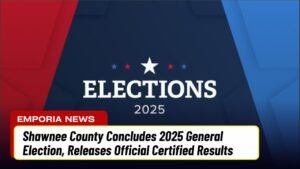With the widespread rise of AI–generated images, a new and often controversial category of AI-created art has emerged. This shift has left many art educators and artists navigating unfamiliar territory as AI content becomes increasingly common.
To better understand the community response, The Gazette spoke with multiple educators and professionals in the local art scene about their perspectives on this evolving trend.
Educators Respond to the AI Art Movement
Emporia Arts Council: Zero-Tolerance Approach to AI Art
The Emporia Arts Council (EAC) has enforced a strict zero-tolerance policy for any AI-generated submissions in their exhibits or events.
Sadie Moore, Art Education and Outreach Coordinator, explained that this stance reflects concerns about how AI systems use existing artworks—often created by human artists—to produce new content.
“It kept surfacing in conversations,” Moore said. “We chose not to exhibit AI art because it’s unfair to the real artists whose work we proudly display.”
Moore, a clay artist who oversees youth and adult classes, shared that many younger creators express strong dislike for AI art, while adults tend to be more open to experimentation. For Moore, the rapid rise of AI in creative spaces feels deeply personal.
“It’s frustrating,” they said. “I’ve invested time, emotion, and years of effort into becoming an artist. Seeing a computer instantly produce something similar is… an interesting feeling.”
Treating AI as a Tool, Not a Replacement
At Flint Hills Technical College (FHTC), Graphic Arts Technology Instructor Tamara Toelle sees AI differently—more as a supportive tool than a full creative solution.
“For certain tasks, AI can help generate references because it is a tool,” Toelle said. “But when you want something distinctive, something with personality, it has to be done by you. AI can only recycle what it has already seen.”
Toelle believes AI can be used effectively for backgrounds, small design elements, or minor enhancements, but not for original signature pieces. As she trains future graphic artists, Toelle stresses that maintaining human creativity and skill is essential for standing out in a crowded field.
“I’m not afraid of AI,” she said. “Eventually, people will crave something different—and AI can’t produce what it hasn’t already been fed.”
Ethical Questions at ESU: Creating Policy Around Student Use
At Emporia State University, discussions have begun within the Faculty Senate to draft official guidelines for AI use.
Associate Professor of Art John Decker strongly discourages students from relying on AI for art assignments, emphasizing the ethical risks.
“If you did this in the professional world, you’d be taking someone else’s opportunity,” Decker said. “That’s where ethics matter. It becomes plagiarism—you’re claiming creative work that isn’t yours.”
AI in the Classroom: Academic Integrity Concerns
Dr. Katherine Iselin, Associate Professor of Art at ESU, said the most common place she encounters AI is in academic dishonesty. She typically identifies several students each semester using AI for major assignments or essays.
She notes that AI-produced work often appears polished yet empty, revealing a lack of understanding.
“I can tell when a student uses AI because the work is vague,” Iselin said. “There’s no depth—they don’t fully grasp how to think or write visually.”
Despite her concerns, Iselin remains hopeful about the long-term future of human creativity.
“I think it may get worse before it gets better,” she said. “But I believe people will eventually recognize that AI can’t replace what humans uniquely offer.”
Conclusion
As AI-generated art continues to grow, local art educators remain committed to preserving human creativity, originality, and ethical practice.
While some see AI as a useful tool and others view it as a threat, all agree that the core value of art—authentic human expression—must remain at the forefront. The conversation is far from over, but educators are preparing to guide students through an evolving artistic landscape.
FAQs
1. Why do some art organizations reject AI-generated artwork?
Many organizations oppose AI art due to ethical concerns, including the use of human-made work to train AI systems without permission.
2. Do art educators believe AI has value in creative fields?
Some educators view AI as a supplemental tool, useful for references or small design components, but not a replacement for human creativity.
3. How is AI affecting students in art programs?
Educators report an increase in academic misconduct, with AI being used for essays and projects that lack originality and critical thinking.




